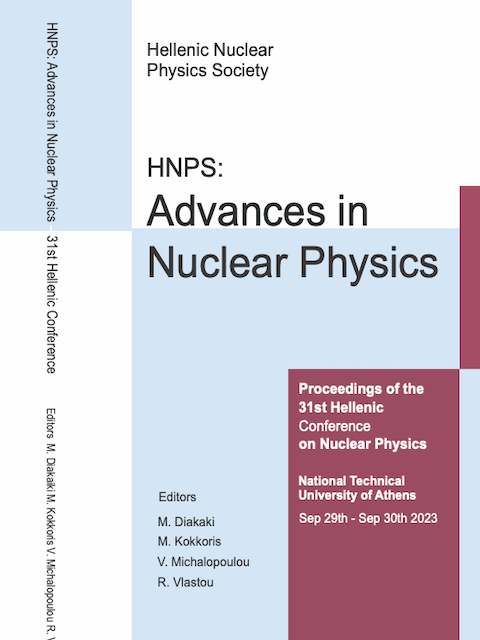Characterization of a Diamond, SiC and Si Detector Response to Neutron Beams at the NCSR “Demokritos”
Περίληψη
Detecting low energy neutrons (below 6 MeV) can be a challenge mostly due to the high γ-ray contamination and the low efficiency of the detectors. Over the last years semiconductor neutron detectors have been developed and due to their unique characteristics, they have been proven useful in numerous applications. Diamond, SiC and Si are the most popular materials for constructing resilient semiconductor detectors. Diamond exhibits excellent physical and electrical properties and it is the material of choice when high energy resolution, irradiation resistance and hardness is required. Silicon (Si) is the most commonly used material for semiconductor detectors, used in microelectronics as well as in various radiation applications. In addition, SiC shows increased radiation resistance and over the last decades it is used for applications in harsh environments, including extreme temperatures and intense radiation conditions. There is also a great interest in studying SiC based semiconductors, since it is a new and promising material, currently not available in the market and the substrate thicknesses produced are very limited. In this work, a study was made with a Diamond a Si and a SiC detector to detect four low neutron energies: 2.45 MeV, 2.95 MeV, 3.45 MeV and 3.95 MeV, with quasi-monogenetic neutron beams at the NCSR “Demokritos”. The experimental spectra were extracted, the calibration of the detectors used was performed and the elastic scattering spectrum was compared with the angular distribution.
Λεπτομέρειες άρθρου
- Πώς να δημιουργήσετε Αναφορές
-
Kaperoni, K., Diakaki, M., Kokkoris, M., Weiss, C., Griesmayer, E., Melbinger , J., Axiotis , M., Chasapoglou , S., Vlastou, R., & Fragner, T. (2024). Characterization of a Diamond, SiC and Si Detector Response to Neutron Beams at the NCSR “Demokritos”. Annual Symposium of the Hellenic Nuclear Physics Society, 30, 25–30. https://doi.org/10.12681/hnpsanp.6389
- Τεύχος
- Τόμ. 30 (2024): HNPS2023
- Ενότητα
- Oral contributions

Αυτή η εργασία είναι αδειοδοτημένη υπό το CC Αναφορά Δημιουργού – Μη Εμπορική Χρήση – Όχι Παράγωγα Έργα 4.0 4.0.






